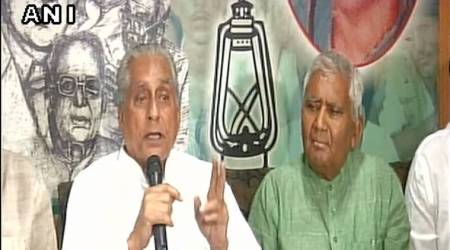At Chest Research Foundation, director Dr Sundeep Salvi is amazed at how Pune has changed drastically and for the worse. “Even in the late ‘90s, most people rode bicycles and took pride that we were the two-wheeler capital of the world. With not many cars on the road, commuting from one place to the other hardly took any time. Today, a distance of four km takes an hour to commute. Bigger cars, restaurants, malls have sprung up, but at what cost? Our air has become filthier, weather has turned erratic and more people are falling ill. Life has become a challenge in the city,” Dr Salvi said.
The CRF director should know as the Wellcome Trust Genetic study reported in Environmental Science and Pollution Research in June this year speaks of the long-term pulmonary effects of air pollution in Pune where the typical concentrations of PM10 in the ambient air is above100 µg/m3. Salvi, who is one of the co-authors of the study — “Air Pollution and Respiratory Health Among Diabetic and Non-diabetics, Insulin Resistance in Diabetic Patients” — said that even a 10 micro gram per cubic meter rise in particulate matter (PM 10) level can increase breathlessness and reduce lung function among diabetic persons. Air pollution contributes to 6.6 million premature deaths every year, in rapidly developing countries. “I still remember the cold winters, the lush green and very welcome monsoons and the pleasantly warm summers in Pune. Even during summers, the temperatures hardly rose over 32 to 35 degrees. The air was so fresh. Today, with so many vehicles, citizens are breathing in polluted air at each traffic signal,” Salvi said.
At SAFAR, scientists start predicting air quality
What has changed in the last couple of years though is the systematic and scientific assessment of the air quality. SAFAR (System for Air Quality Forecasting and Research) was developed by Pune scientists at the Indian Institute of Tropical Meteorology (IITM) to give air quality at a given time and predict what it will be 24 hours later. For instance, last year, SAFAR scientists showed how the level of PM2.5 had started to build-up from 93 µg/m3 (POOR) on Dec 21 to 330 µg/m3 (severe) on December 24 and predicted to peak at 342 µg/m3 (severe) on Dec 25. According to Dr Gufran Beig, project director SAFAR, the ultimate aim was to increase the awareness among the general public about the air quality so that appropriate mitigation action can be taken. In 1994, the National Air Quality Monitoring Programme (NAMP) had appointed experts from the environment science at Pune University to monitor the rising particulate pollution. According to reports, air quality monitoring by NAMP between 1999 and 2004 showed that particulate matter — mainly dust stirred by vehicles on roads and crushing or grinding operations — ranged from unhealthy to critical.
Horns get louder… little stopping festival noise
“There has been a dramatic shift in the environmental indicators like noise pollution. All the excellent monitoring and control policies, mechanisms for taking action by police and even district magistrate has failed to improve the scenario. Sporadic events of festivals, like Ganeshotsav, Navratri and Diwali, are no more the only causes for this challenge, but every day traffic on roads and infrastructure-related activities (construction of cement roads, bridges and flyovers, buildings, public amenities like subways and others) are significant contributors to noise levels of the city,” Mahesh Shindikar, assistant professor, Department of Applied Science, College of Engineering, Pune said. Earlier, central locations of the city, like Koregaon Park or even Sindh Society, were not affected. However, today, the silent zones are under constant threat of this environmental hazard. The permissible noise levels prescribed by the Central Pollution Control Board (CPCB) were crossed long back even for the routine normal day. In a decade and a half (2000-2015), the average noise levels at various places have grown to alarming levels. There has been no abating the noise pollution during the procession parade of Ganeshotsav during the last 16 years and in some years the average levels have even crossed 100 decibels.
‘Seriousness of the problem between 30-40 per cent among citizens’
The Maharashtra Pollution Control Board, the Environment Department of the Pune Municipal Corporation (PMC) and various academic institutes have been involved in the monitoring process of air and noise pollution. The Environment Status Report, 2016, released a few days ago by the civic administration, showcases the alarming rise in the noise levels through media and scientific studies. However, Shindikar pointed out that the overall understating of the problem and its seriousness ranges between 30-40 per cent among common citizen. The traffic police have expressed the concern about the disturbance, loud hearing and deafness, vomiting and chest pain they are experiencing as a cumulative effect of air and noise pollution. Still, these physical problems are measurable, but the psychological impacts are unseen and more dangerous.
NGT effect, policy changes, more surveys planned
The National Green Tribunal (NGT), set up in 2010 for the speedy disposal of cases related to environmental protection, has been a game changer in the fight against pollution. Activists like Aseem Sarode said that interventions by the NGT and several HC orders have compelled government bodies like PMC and MPCB to perform. PMC has to ensure that they release an environmental assessment report for each year while as per the court directives, the MPCB has also undertaken noise mapping across 27 cities.

